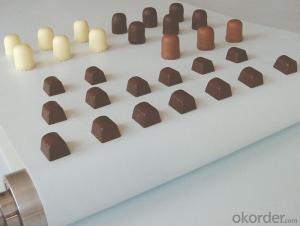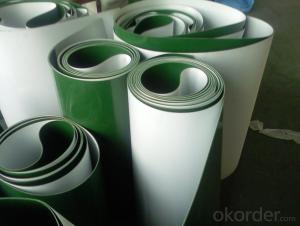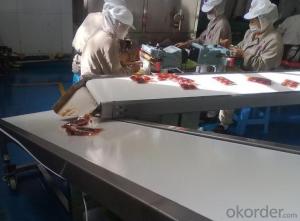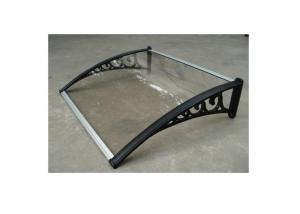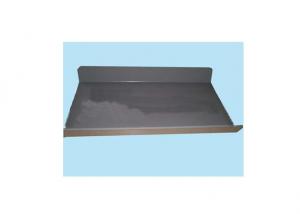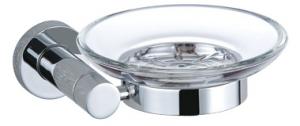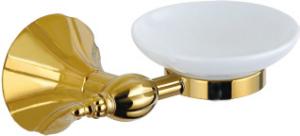Different Types Food Grade Belting Flat PVC&PU Conveyor Belting
- Loading Port:
- China main port
- Payment Terms:
- TT OR LC
- Min Order Qty:
- 10 m²
- Supply Capability:
- 5000000 m²/month
OKorder Service Pledge
OKorder Financial Service
You Might Also Like
Different Types Food Grade Belting Flat PVC&PU Conveyor Belting
The proporties of PVC Food conveyor belt
PVC type conveyer belt's upper and lower layers are PVC coating cover, single-sided tape thickness: ≥1.0mm; PVG type belt's upper and lower layers are nitrile rubber and PVC, single-sided tape thickness: 1.5mm-4.5mm.
PVC type conveyer belt's inclined angle: <16°
PVG conveyer belt's inclined angle: <20°
Specifications of PVC food conveyor belt
1.width: 300mm-1800mm
2.thickness:4mm-30mm
3.number of piles:1-6 ply
4.tensile strength:8Mpa-20Mpa
Flame retardant conveyer belt is made from the whole belt core via dipping and plastifying in polyvinyl chloride (PVC) dipping agent or sulfuration. It features largely in the high strength, large freight volume and stable conveyance performance. Besides, it is fire retardant, anti-static, shock resistant, wearable and corrosion resistant
Conveyor Belt Photos
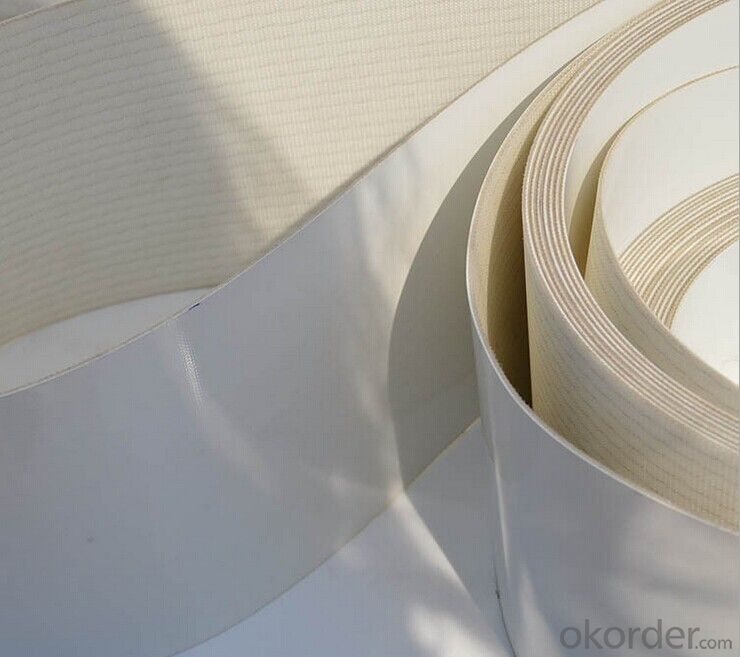




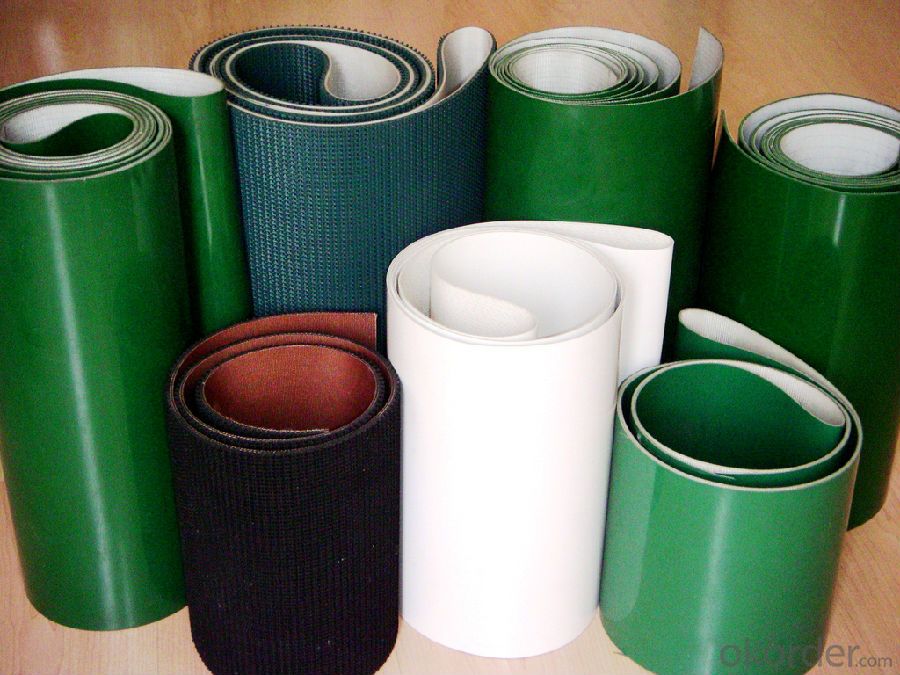
FAQ
Q: Can you do OEM?
A: Yes, we can do OEM products based on your requirements.It's no problem.
Q: How can I get some samples?
A: 1, We are honored to offer you samples. New clients are expected to pay for the courier cost, the samples are free for you, this courier cost charge will be deducted from the payment for formal order.
2, Regarding the courier cost: you can arrange a RPI (remote pick-up) service upon Fedex, UPS, DHL, TNT, etc. to have the samples collected; or inform us your DHL collection account. Then you can pay the freight direct to your local carrier company.
Q: How do you do regarding quality control?
A: Quality is priority? We always attach great importance to quality controlling from the very beginning to the very end:
1)All raw material we used are environmental-friendly;
2)Skilful workers care every details in handling the producing and packing processes;
3)Quality Control Department specially responsible for quality checking in each process.
Q.What are your payment terms?
A: Standard payment terms are 30%T/T,and balance payment before shipment.
L/C at sight is acceptable
Other payment terms can be negotiable.
If you want to find more details about the PVC conveyor belt, you could make an Inquiry in okorder.com. Okorder.com provides you the products with best price and quality!
- Q: Do olive nets protect against hailstorms?
- No, olive nets do not provide protection against hailstorms.
- Q: How do olive nets prevent fruit rot in olives?
- Olive nets prevent fruit rot in olives by providing a physical barrier that keeps the olives off the ground. This helps to minimize contact with soil-borne pathogens and pests that can cause fruit rot. Additionally, the nets create a shaded and well-ventilated environment, which reduces moisture accumulation and promotes better air circulation around the olives, preventing the conditions favorable for rot development.
- Q: How do olive nets prevent hail damage to olives?
- Olive nets prevent hail damage to olives by acting as a protective barrier, shielding the olives from the impact of hailstones. The nets are typically placed over the olive trees, creating a physical barrier that prevents the hailstones from directly hitting the olives and causing damage. Additionally, these nets also offer some shade, reducing the risk of sunburn on the fruit. Overall, olive nets provide an effective solution to minimize hail damage and ensure a higher yield of quality olives.
- Q: Can olive nets be used in combination with tree spacing techniques?
- Yes, olive nets can be used in combination with tree spacing techniques. Olive nets are commonly used to protect olive trees from bird damage and to collect fallen olives during harvesting. By utilizing tree spacing techniques, such as planting trees at specific distances apart, it is possible to optimize the use of olive nets and ensure effective coverage and protection for the entire olive orchard.
- Q: Are olive nets suitable for organic farming certifications?
- Yes, olive nets are suitable for organic farming certifications.
- Q: Can olive nets be used in olive groves with limited water availability?
- Yes, olive nets can be used in olive groves with limited water availability. Olive nets are primarily used to collect olives during harvest season, and they do not require additional water for their use. Therefore, the limited water availability in the olive grove would not affect the effectiveness or usability of olive nets.
- Q: Can olive nets be used for both outdoor and greenhouse olive cultivation?
- Yes, olive nets can be used for both outdoor and greenhouse olive cultivation. Olive nets are versatile and can protect olive trees from pests and birds, as well as provide shade and reduce evaporation in outdoor settings. In greenhouses, olive nets can help regulate temperature and humidity, while also preventing birds and pests from damaging the olive trees.
- Q: Can I marinate salted eggs with a plastic bucket?
- In addition, PVC plastic products at higher temperatures, such as 50 degrees or so, will slowly decompose hydrogen chloride gas, this gas harmful to humans, so PVC products should not be used as food packaging. Bakelite (bakelite) containing phenol and formaldehyde, have certain toxicity to the human body, is not suitable for the storage of food and food packaging. Electric jade (urine aldehyde plastic) although odorless, but at 100 degrees of boiling water or vinegar for containing food, there will be precipitation of free formaldehyde, harmful to the human body, so it is not suitable for food or food packaging. Waste plastics (some may add a little new material) update, because of its complex composition, it is difficult to guarantee that no toxicity, it is generally not used as food containers and packaging.
- Q: How about a bottle of water?
- To see whether the use of bottles can be recycled, such as circulating use, depends on the number of cycles to use, there is a triangle on the bottle, there is a digital intermediate, digital is a few can be used on behalf of several times.
- Q: How do olive nets prevent fruit predation by insects?
- Olive nets prevent fruit predation by insects by creating a physical barrier that prevents insects from reaching the fruit. The tightly woven netting covers the olive tree, completely enclosing the fruit and preventing insects from accessing it. This keeps the fruit safe from infestation and reduces the risk of damage caused by insect feeding or oviposition.
Send your message to us
Different Types Food Grade Belting Flat PVC&PU Conveyor Belting
- Loading Port:
- China main port
- Payment Terms:
- TT OR LC
- Min Order Qty:
- 10 m²
- Supply Capability:
- 5000000 m²/month
OKorder Service Pledge
OKorder Financial Service
Similar products
Hot products
Hot Searches
Related keywords
